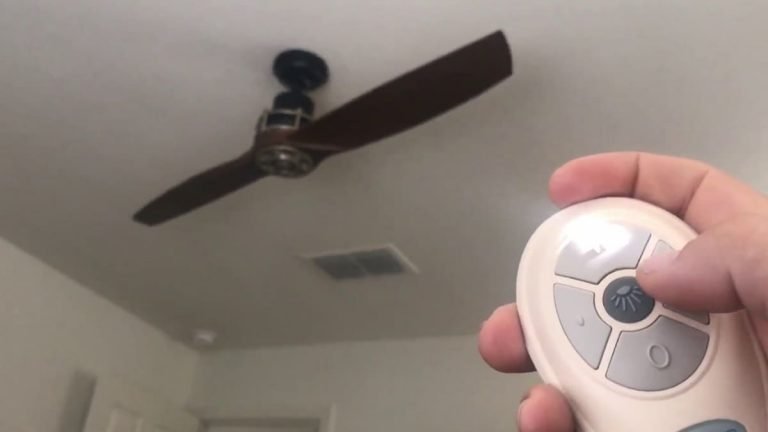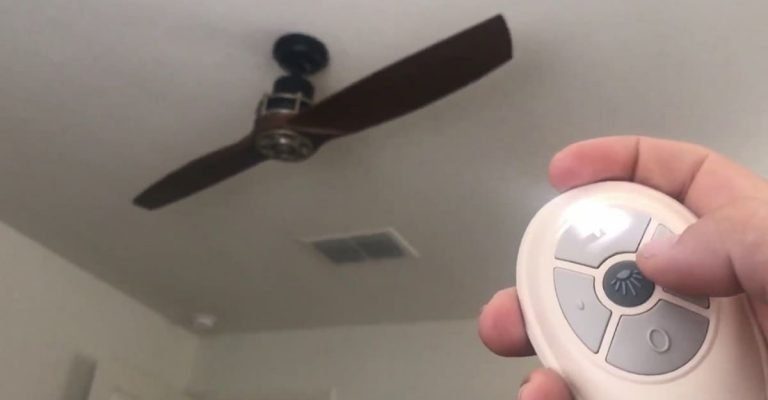
Here’s the thing: you’re not alone. A lot of us toss that thin little manual within days of opening the box. So, when the remote goes haywire, stops syncing, or needs a reset, you can feel stuck. But resetting a Lutron fan remote isn’t rocket science. With a bit of patience (and maybe a step stool), you can get your remote back in sync and your ceiling fan spinning properly again. No manual, no sweat.
Recognizing When Your Lutron Remote Needs Resetting
Before jumping into any reset steps, it’s important to know when a reset is actually the fix you need. Picture this: you push the “fan speed” button, but nothing happens. Or maybe you hear that infamous “click” but see no movement from the blades. Sometimes, your Lutron remote may blink an LED at you, as if trying to send an SOS.
Why does this happen? The remote and the fan’s receiver can lose their connection—or “sync”—for a bunch of reasons. Maybe someone replaced the batteries. Perhaps there was a power outage, or you moved the fan’s wall switch. In rare cases, interference from other household electronics can mess with the signal.
If your remote seems totally unresponsive, or it controls the light but not the fan (or vice versa), it’s a classic sign that the code between the remote and receiver needs to be reset or re-paired.
Knowing these symptoms helps you avoid wild goose chases—like changing another set of fresh batteries for no reason. Resetting is the right move when basic troubleshooting hasn’t worked.
Lutron Ceiling Fan Remote: How It Actually Works
Understanding the basics of how this little device communicates with your fan makes the reset process feel a lot less mysterious. Lutron fan remotes use a low-power radio signal, kind of like a walkie-talkie, to send commands to a receiver mounted inside the fan’s canopy (the round cover near your ceiling). When everything’s in sync, you can control the fan speed, turn the light on or off, and sometimes even dim the light—all wirelessly.
The “code” or “sync” between remote and receiver is what allows only *your* remote to control *your* fan, rather than every ceiling fan on the block. If something disrupts this communication, the commands go unheard. It’s like trying to call someone whose phone is on airplane mode—they can’t hear you, no matter how many times you call.
If you’re wondering why you can’t just grab another universal remote, here’s the catch: Lutron uses specific pairing and coding, so not every third-party device will work. Resetting reestablishes this private handshake between your remote and fan.
How To Reset Lutron Ceiling Fan Remote Without Manual
Here’s the moment you’ve been waiting for. No manual? No problem. Most Lutron ceiling fan remotes share a similar reset and pairing process. You just need to follow these steps carefully, like following a recipe for the first time.
- Step 1: Cut the power. Head to your wall switch or circuit breaker and turn off power to the fan. Wait at least 10 seconds. This clears out any bad signals or glitches.
- Step 2: Restore power. Flip the switch or breaker back on. Now, your fan’s receiver is in a ready-to-pair state for a short window—usually about 60 seconds.
- Step 3: Press and hold the remote’s main button. On most Lutron remotes, this is the big “Fan” button or the combination of “Fan” and “Light” together. Hold it down for 5–10 seconds. Watch for a light on the fan or remote to blink—that’s your sign the code is syncing.
- Step 4: Test the remote. Try the fan speed and light controls. If everything responds, congrats, you’ve reset and paired your remote. If not, repeat the steps or try changing the remote’s battery before another attempt.
Honestly, patience is key here. If you press too soon or too late, the receiver might miss your pairing request. It can take a few tries if you’re new to the process.
Troubleshooting: What If The Reset Doesn’t Work?
You might be wondering—what if you followed every step, and the remote still stares back at you in silence? Don’t panic. Let’s walk through a few things to double-check.
First, check the remote’s battery. Even if you just swapped them out, a weak battery can fail to send a strong pairing signal. Try a fresh, name-brand replacement. Next, make sure you truly cut power to the fan—sometimes a wall switch only toggles the light, not the actual fan circuit. For total certainty, use the breaker panel.
If you’re still out of luck, move closer to the fan during pairing. Other electronics (like Wi-Fi routers or microwaves) can add interference. Finally, be sure you’re pressing the *correct* button combination for your model—sometimes, it’s not obvious which button is the pairing trigger. If you’re stumped, jot down your remote’s model number and do a quick search for images matching your device.
Don’t underestimate a stubborn receiver. Sometimes, internal wiring issues or power surges can damage the fan’s onboard receiver, not just the remote.
In those rare cases, replacement parts—or a call to an electrician—might sadly be in your future.
Pairing Lutron Remote Codes: How They Work Without the Manual
Resetting isn’t just about pushing buttons—it’s about renewing the “secret code” your remote and fan share. Unlike old-school dip-switch remotes, most Lutron models use an auto-learning code that gets set during pairing. This keeps things more secure, as random remotes can’t accidentally control your fan.
If you have more than one Lutron fan in your house, do the reset process one fan at a time. Otherwise, you risk “cross-talking” remotes, where a single remote controls multiple fans by mistake (and nobody wants that circus).
You won’t need to enter any code manually. The remote and receiver handle this automatically when you follow the pairing sequence above. If you’re into techy details, this “learn mode” only lasts a minute after powering on, so time your button presses accordingly.
Even without the manual, these smart remotes are designed to be forgiving. As long as you match the power cycle and pressing patterns, you’ll reset the connection.
When To Replace Lutron Remote Batteries Or Consider Alternatives
It’s funny how often remote troubles are really just dead batteries. Here’s how you know it’s time to swap them out:
- The remote’s LED indicator doesn’t light up when you press any button
- Fan or light responds only sometimes, or with a big delay
- You’ve had the same batteries for a year or more
Pop off the remote’s back cover (it usually slides open) and drop in fresh batteries—double-check the orientation. If things are still wonky, it might be time to consider a replacement remote.
Universal remotes sound tempting, but here’s a hard truth: most aren’t programmed for Lutron’s custom codes. You’ll have much better luck tracking down a new Lutron-branded remote that matches your original model.
Universal Versus Brand-Specific Remotes: Pros And Cons
You might be tempted to try a universal ceiling fan remote, especially if the original Lutron remote is lost or broken. Here’s where things get tricky. While universal remotes work fine for some brands, Lutron uses unique pairing tech and codes to avoid interference and cross-control.
Brand-specific remotes offer:
- Reliable pairing and full feature support
- Simple reset and sync instructions
- Direct compatibility with the receiver in your fan
Universal remotes might:
- Miss important features (like light dimming)
- Require tricky setup or jumper switches
- Fail to pair at all, leaving you back at square one
In my opinion, if you’re aiming for frustration-free setup—and especially if you ever need to pair or reset—you’re far better off sticking with the official Lutron remote. It might cost a bit more, but it saves time and headaches.
Staying Organized: Preventing Future Remote Confusion
After you finally get your fan spinning and lights blinking at your command, you might think you’re done. But let me share a tip learned the hard way—take five minutes to jot down your remote’s model name and pairing sequence, or snap a photo and save it somewhere handy.
Stick a label with the pairing steps inside a cabinet, or keep the info in your phone’s notes app. That way, the next time you need to reset your Lutron ceiling fan remote—manual or not—you’re ready, cool breeze and all.
Closing thoughts? Sometimes it feels like remotes have a mind of their own, but with a little know-how and patience, even a missing manual won’t keep you from enjoying your ceiling fan. Remember, when technology acts up, staying calm and methodical usually wins the day. Now, enjoy that well-earned breeze!
